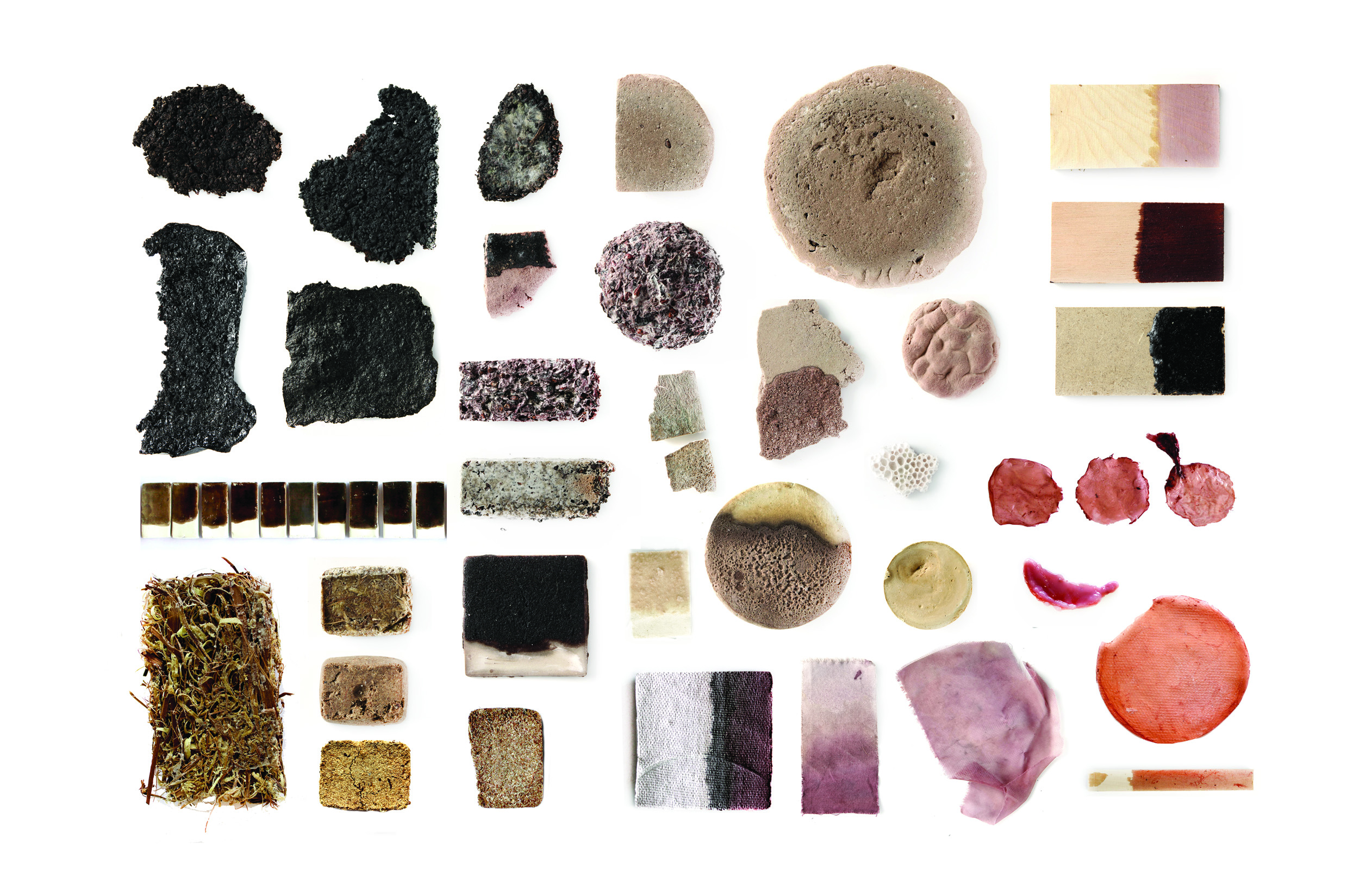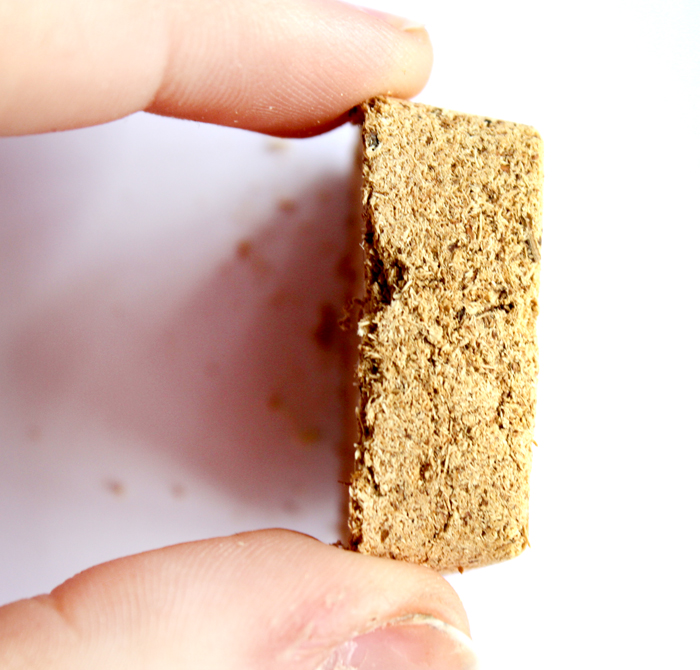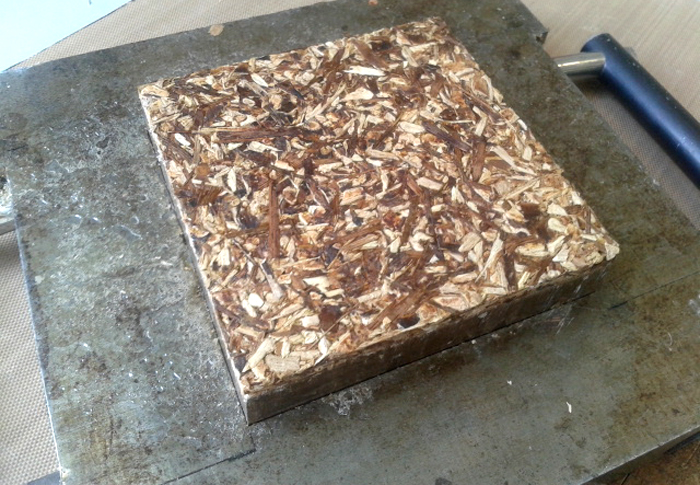Column of a material maker (22)
Published 6 March 2017 by Caroline Grellier
It has now been two years since our maker started her column on Termatière, her business creation project in bio-sourced materials. While her project is on track, review of an eventful adventure.
From idea to business
Two years ago, I had just settled down in Montpellier with a project in mind: creating my business from research on the upcycling of viticulture waste into bio-sourced materials. Although Termatière brought me down South to meet the Montpellier incubator Supagro, I thought I’d only stay for a year or two running the business, while I looked for someone to replace me and then go back to my garage to tinker with my things.
Right from the beginning, my motivation was not to be the boss, but to do what I liked, in the way I imagined. To concretely support my initial conviction: tomorrow’s materials will be bio-sourced.

I arrived in Montpellier with fifty or so samples of materials from viticulture origin, tinkered in my improvised workshop. I was then dreaming of creating a cooperative, the operating mode of which matched my values and the human outlook of my project. A cooperative that would do everything: harvest vine shoots, turn them into materials, make wine cases, sell them and distribute them. And then I dreamed less intensely. First because I started to understand the economic reality of the project, and because deep down I never wanted to become producer-saleswoman of wine cases. My thing is the material and the whole territorial approach around it.

This project definition work took some time, a lot of time, to materialize. Because I had far to go, because I only still had my designer-maker hat on and I had to change brains sometimes to view the project from a different angle. Termatière went successively from a design agency specialized in bio-sourced materials to a research unit on local materials or still a material cooperative. You must have found it difficult to keep up with all this sometimes!
In the trainings I attended at the incubator, I was told about economic models, working capital, financing… Over time I learned to also enjoy this entrepreneurial part and appreciate the gymnastics it entailed. The more I made progress in the construction of the project, the more I relished the freedom of making my own choices to model my dream company and blossom in work that captivated me.
Being accompanied by Agro Valo Méditerranée (Supagro) allowed me to work with two laboratories from the National institute for agronomic research (Inra), Sciences for enology (SPO) and Agropolymer Engineering and Emerging Technologies (IATE), that helped me develop my 100% viticulture materials. I then joined Alter Incub, then the incubator of the Ecole des Mines, the engineering school in Ales, to work in the material lab of the school, the C2MA. I won several competitions, obtained two important fundings from the Occitanie region and got numerous supports in the network mobilized around the project.



Culture clash
Not easy to make choices between one’s ethics, the maker philosophy and the entrepreneur’s realities; not simple to decide between open source and protection patents; not evident to tackle other cultures as a maker, cultures of science, research, entrepreneurship. Creating one’s start-up is more than ever fashionable but the start-up ecosystem, with substantial fundraising, and sometimes hard blows, has never been my thing.
Termatière is the result of a cocktail. This hybridity between design, science, research, and maker culture, I have cultivated it and lay claim to it in the “method” I formalized. During these two years, I have repeatedly gone back to West Africa to find inspiration from low-tech models, anchored in a social and solidarity economy. This considerably influenced the construction and the philosophy of Termatière.
What is Termatière today?
The know-how of Termatière is to upcycle local resources thanks to a low-tech approach with a strong territorial dimension. The company is organized in four divisions.
The first and central, the internal pillar of the company skeleton is the R&D workshop, this garage lab where I experiment residues to make material samples. An empirical, intuitive, creative approach that puts the emphasis on serendipity.

This activity leads to the formalization of territorial material libraries. Termatière is boosting its development projects for new materials. Once the samples are made, I get closer to my partner laboratories for technical support. As a designer, I also consider new applications, that allow us to quickly orientate a precise bill of specifications; as an entrepreneur, I study potential markets with help. This is the story of the wine case in vine shoot composite! For which I am now waiting for feedback from potential buyers.
And R&D by Termatière is no longer the only activity of the company! I am developing, in parallel, consulting, training (leading workshops “creating materials in the maker way” in design and architecture schools), as well as a division of product design services, from bio-sourced materials.

Finally, it’s to Africa again that the realization of these activities is taking me. So here I am in Togo for 5 months. On the menu: consulting missions on the upcycling of plastic bags; a furniture design project 100% made in Togo (with research for applications of agricultural waste, where I will able to tinker again); a material creation workshop to share the Termatière method with architecture students… The second project of the R&D workshop on the stabilization of earth bricks by agricultural residue (banana, palm oil) will continue as an underlying theme.
Here, in Togo, I feel particularly inspired in my quest for local materials allowing to bring about a true social impact, with a way of proceeding and a culture that match my values. In January, I started to pay myself a salary and created Termatière within the network of the activity and employment cooperative Mine de Talents (Talents mine). The best is still to come!
